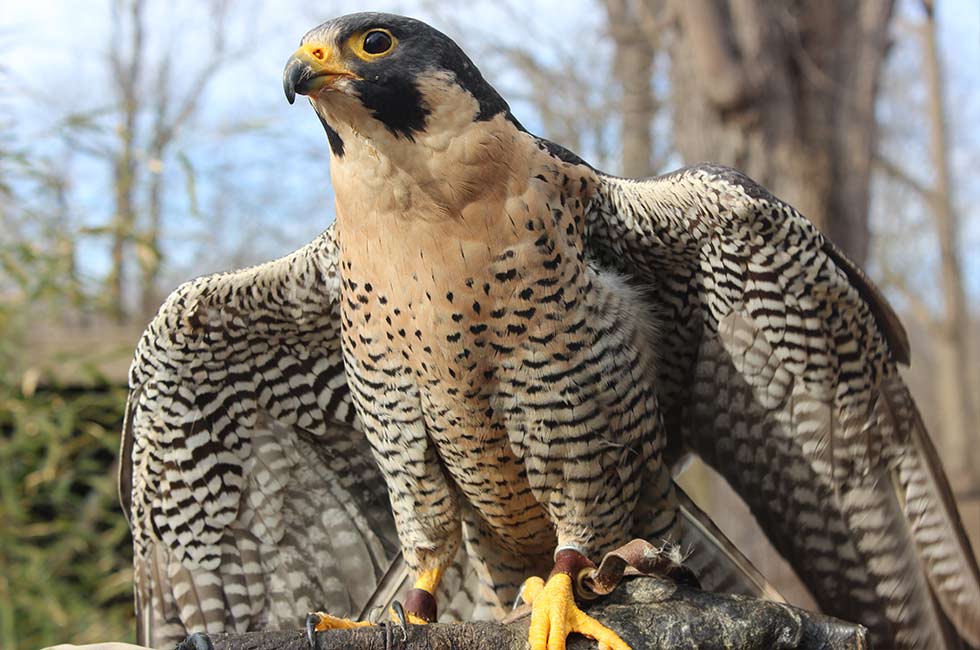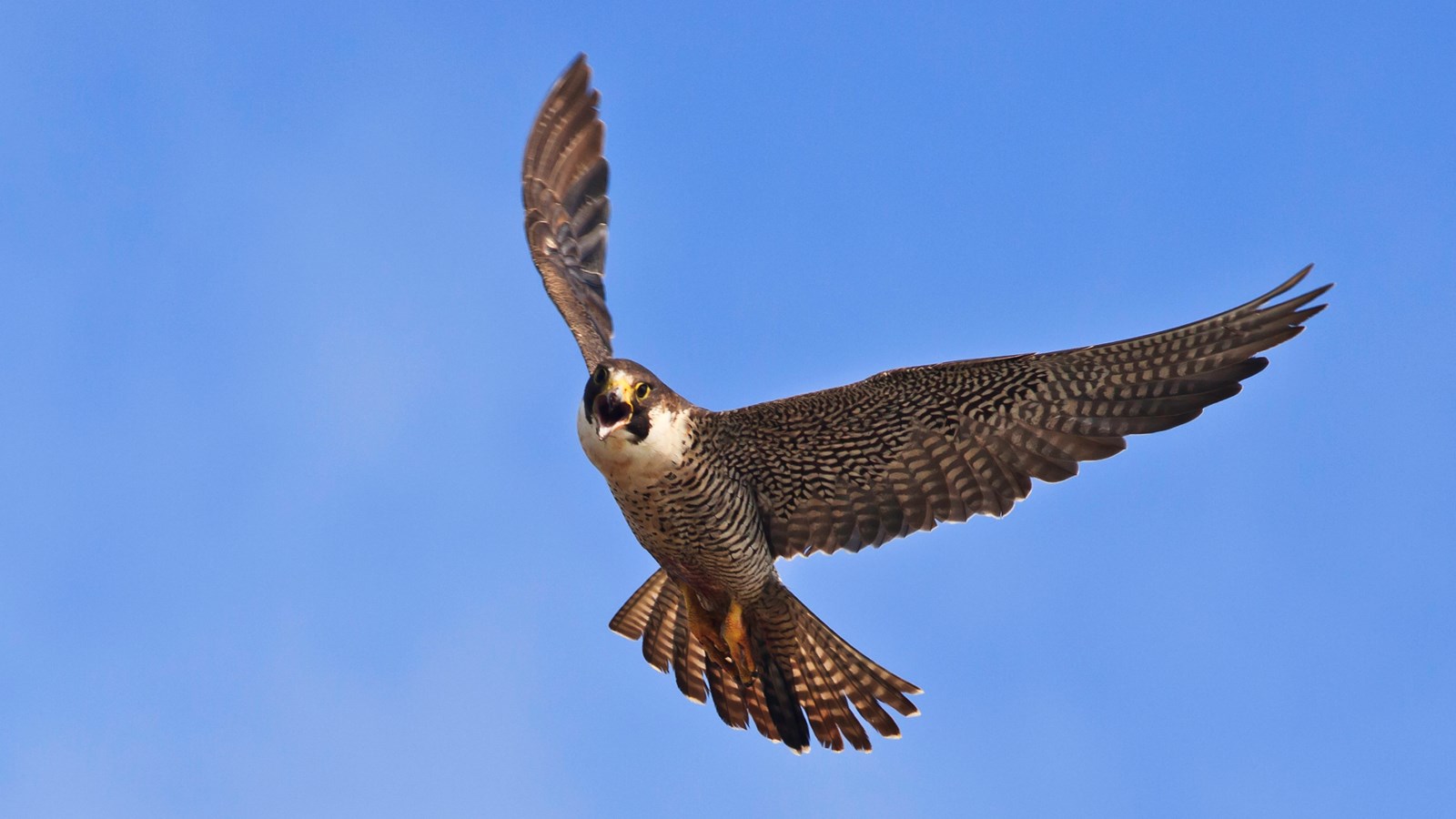The Peregrine Falcon is a majestic bird of prey that is known for its incredible speed and agility. This bird is found all over the world, from the Arctic tundra to the tropical rainforests. In this article, we’ll explore the characteristics, behavior, and conservation efforts related to the Peregrine Falcon.
The Peregrine Falcon is a medium-sized bird that can grow up to 20 inches in length and weigh up to 3 pounds. It has a wingspan of up to 47 inches and has a distinctive black “mustache” under its beak. The Peregrine Falcon has a dark blue-gray back, white underparts, and black “sideburns.” Its eyes are dark and its beak is sharp and curved, ideal for catching prey. The Peregrine Falcon is the fastest animal on Earth, reaching speeds of over 240 miles per hour during a dive called a stoop.

The Peregrine Falcon is a fierce predator that preys on other birds, such as pigeons, doves, and waterfowl. It is known for its remarkable hunting technique, which involves a high-speed dive called a stoop. During a stoop, the Peregrine Falcon tucks its wings in close to its body and plunges towards its prey, striking with its sharp talons. The Peregrine Falcon is a solitary bird that pairs up with a mate during the breeding season. It builds its nest on high cliffs, tall buildings, or other high structures.
The Peregrine Falcon was once on the brink of extinction due to pesticide use, which caused thinning of the eggshells and low reproductive success. However, conservation efforts have been successful in bringing the Peregrine Falcon back from the brink of extinction. The use of pesticides has been banned, and captive breeding programs have been successful in reintroducing the Peregrine Falcon to its former range. The Peregrine Falcon is no longer listed as endangered, but it is still protected by law in many countries.

The Peregrine Falcon is a remarkable bird of prey that is known for its speed, agility, and hunting prowess. Thanks to conservation efforts, this species has made a remarkable recovery from the brink of extinction. However, more work is needed to ensure that this magnificent bird continues to thrive. It is important for individuals and organizations to support conservation efforts and work together to protect this species for future generations to enjoy.










